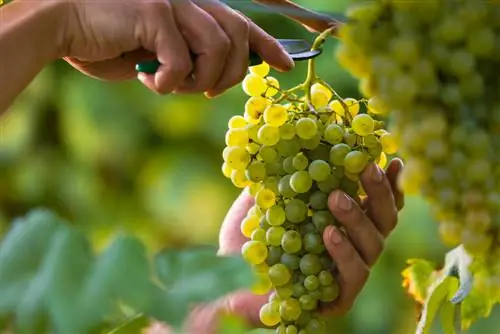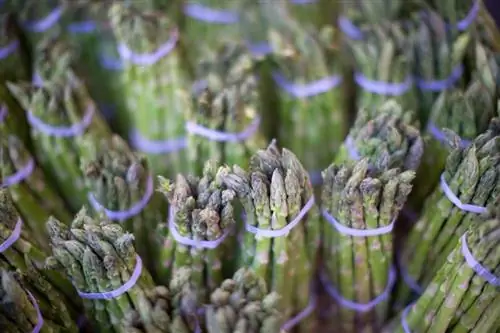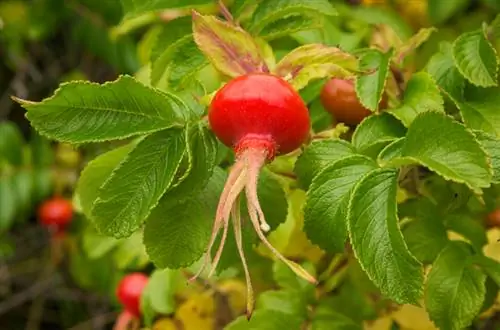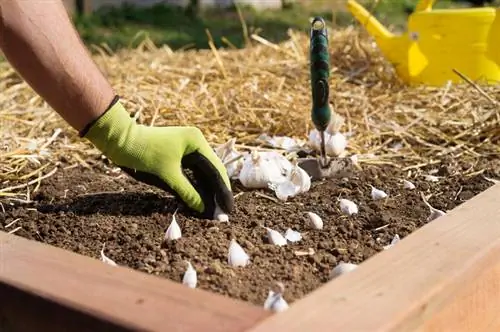- Author admin [email protected].
- Public 2023-12-16 16:46.
- Last modified 2025-01-23 11:22.
The climbing plant needs a lot of warmth and high levels of sunlight so that the grapes reach full ripeness. The harvest takes place in the second half of the year, with different varieties having different ripening times. In order to increase yields, pruning makes sense.
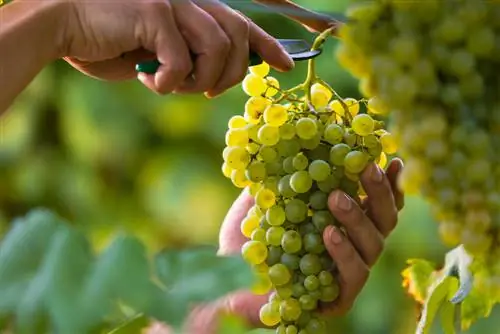
When is the grape season?
The grape season extends from late summer to the autumn months, although the harvest time can vary depending on the variety. In the garden, early ripening varieties range from August to September and late ripening varieties from September to October.
Table grapes throughout the year
The grape season extends through late summer and continues into the fall months. The cultivation of wine grapes takes place in Mediterranean areas, where the harvest lasts from July to November. In the supermarket, table grapes are in season all year round. They are imported not only from Europe but also from South America. If you want to reduce the environmental footprint of these long transport routes, you should avoid flying fruit and wait for the gardening season.
Harvest time in the garden
While the harvest window in wine-growing regions opens from August to October, the harvest season is slightly shorter in cooler regions. In the garden, the grape harvest lasts two to three weeks in late summer, depending on the variety planted. Early-bearing vines are harvested from August onwards. Late varieties bear from September to October. Through a targeted combination of early and late maturing cultivars, the harvest period can be extended to a maximum.
Varieties of grapes:
- early harvest: 'Michurinski', 'Flame Seedless' and 'Wostorg'
- mid-early varieties: 'Narancsizü', 'Dornfelder' and 'Husajne Chalgi'
- late harvest: 'Theresa', 'Angela' and 'Christine'
Increase the harvest
Grapes are ready to harvest as soon as they have fully developed their typical coloring. The stem becomes increasingly woody and the sugar content in the pulp increases. If in doubt, you can do a taste test to check the stage of ripeness of the fruit.
Cutting fruit wood
Carry out a radical pruning in late winter and shorten the fruit-bearing canes. As a result, the yield will be lower next season. However, the remaining grapes ripen better. Cone cutting is recommended for varieties that develop fruit on short wood. These shoots are reduced to two to four eyes. If the grapes grow on long shoots, shorten the branches to four to eight vegetation points.
Perform summer pruning
As soon as water shoots appear on the old wood, you should remove them. They do not develop flowers and compete with the fruit wood. If the fruit cover is very heavy, thinning out in June is recommended. In the following months, focus on removing annoying side shoots on the main shoot and those branches in the grape zone that grow strong, long and overhang. Remove leaves that are too large and may obscure the grapes. This procedure ensures that the fruit buds receive enough light and can dry well.
Tip
You should exercise caution when pruning late-ripening table grapes on south-facing walls in summer. As long as the fruits have not yet developed a wax layer, they are susceptible to sunburn and turn brown quickly.

